A student calculates the acceleration of m1 in figure shown as a1 = m1 - m2g/m1 + m2.Which assumption is not required to do this calculation. A rim of pulley is frictionless B string is massless C pulley is massless D string is inextensible
C pulley is massless
Related Solutions
A smooth ring of mass connected with a hanging block of mass by a long inextensible string, is released from rest. The ring moves vertically along a fixed rigid rod as shown in figure. Describe the motion of the ring if
(A)
(B)
(C )
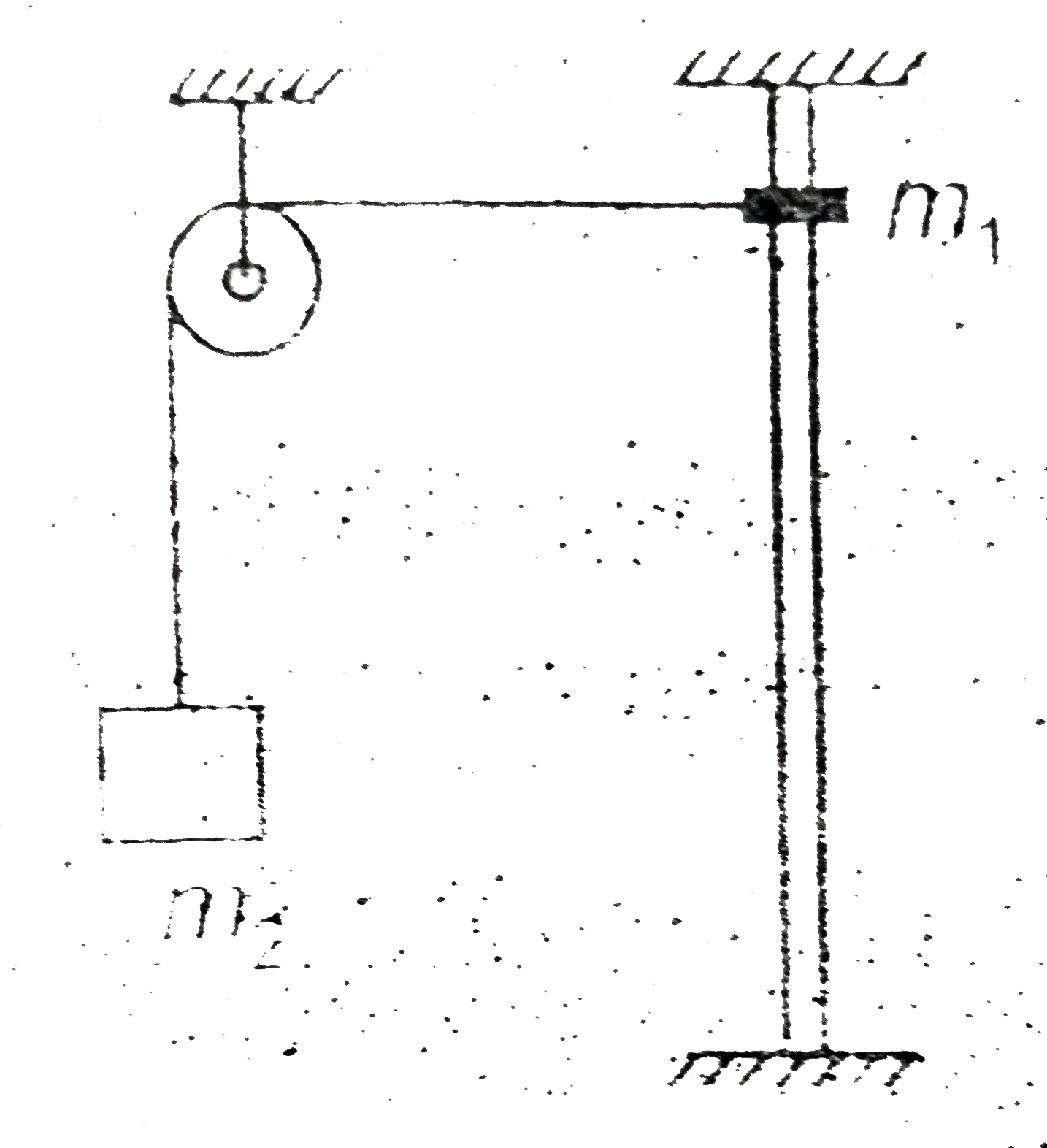
View SolutionAssume that all the pulleys are massless and frictionless and strings to be inextensible.
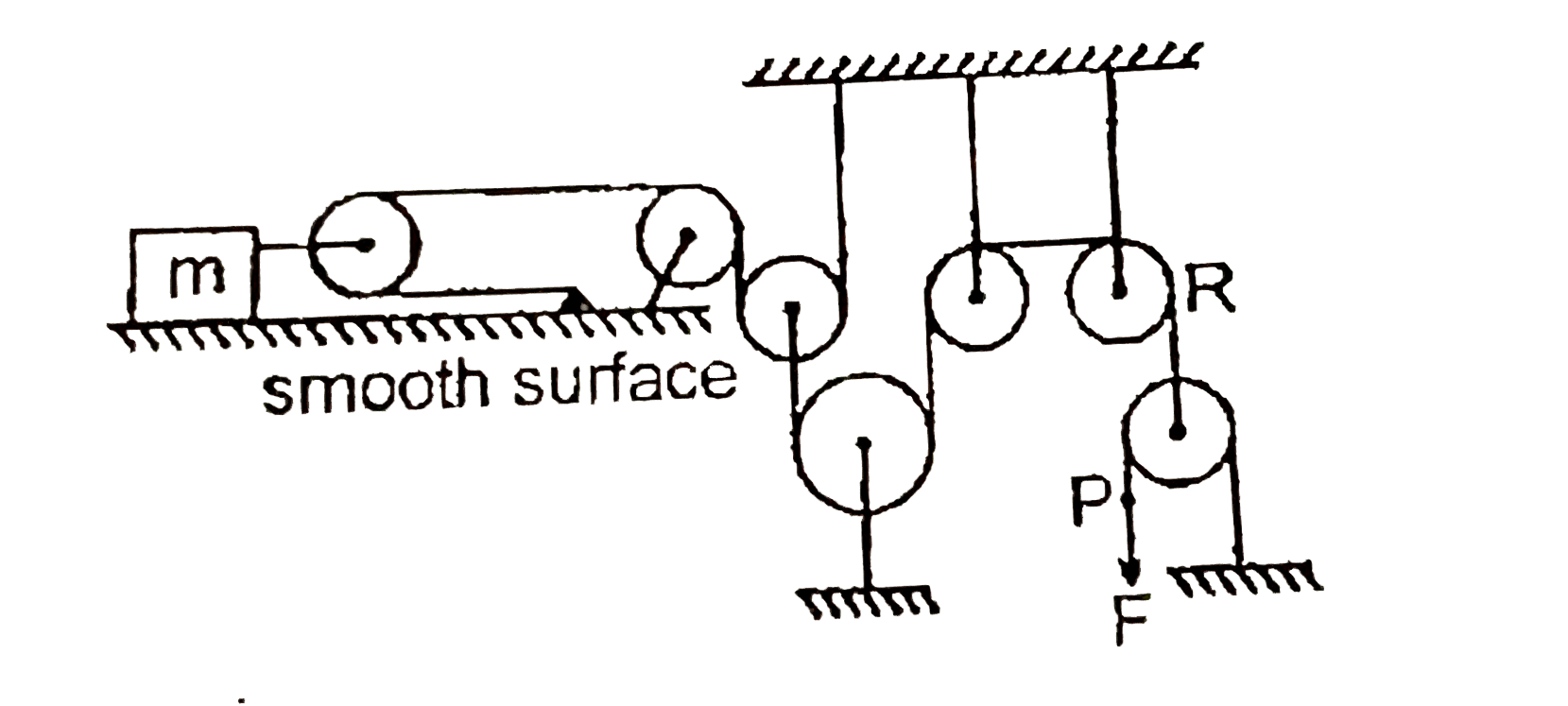
View SolutionAcceleration of pulleys and blocks are as shown in the figure. All pulleys & strings are massless & frictionless magnitude of and are :
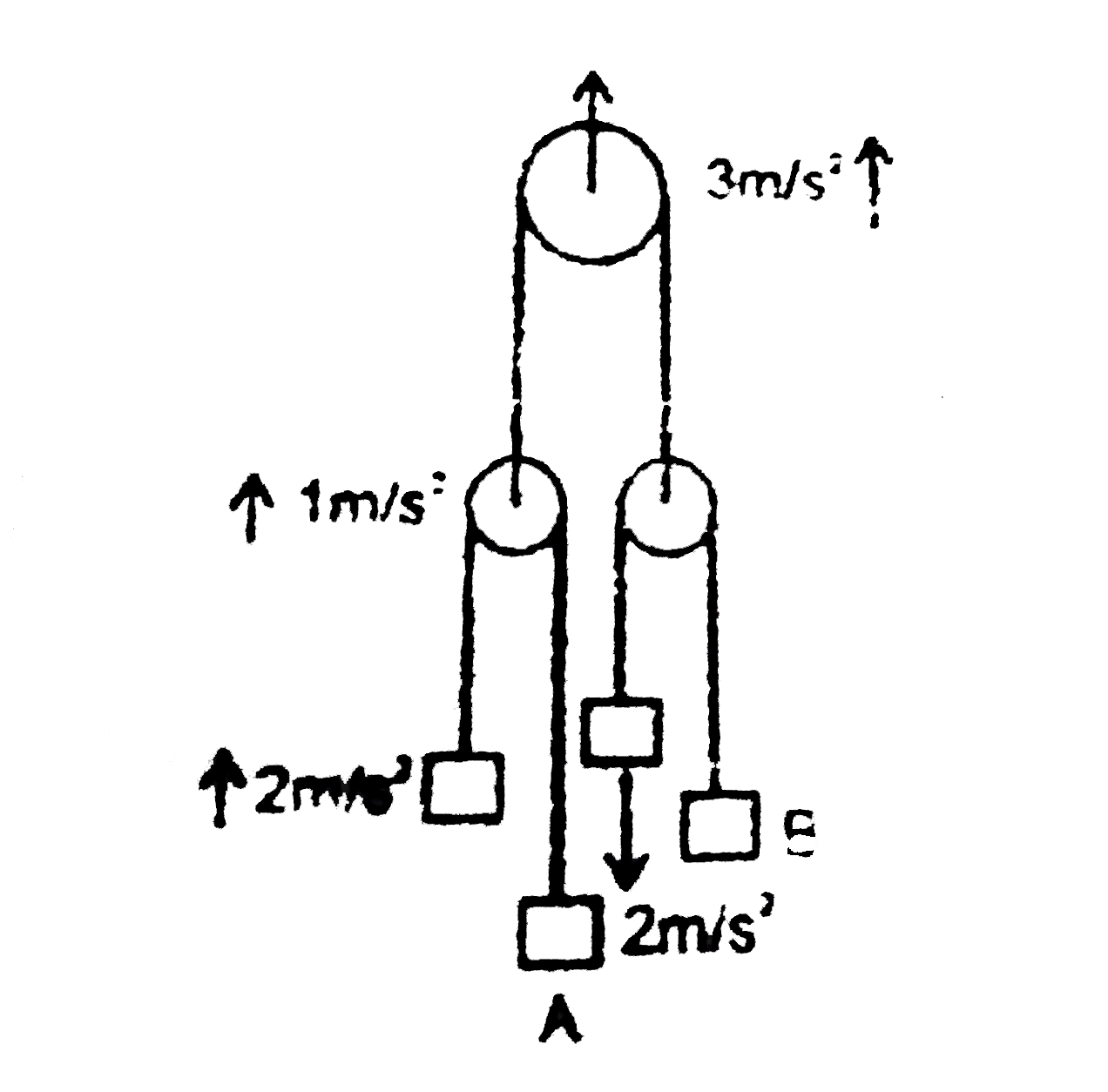 .
.
View SolutionAcceleration of pulleys and blocks are as shown in the figure. All pulleys & strings are massless & frictionless magnitude of a_(A) and a_(B) are : .
View SolutionIn the system shown in the given figure, the inline is frictionless, the string is massless, and inextensible pulley is light and frictionless. The system is released from rest.
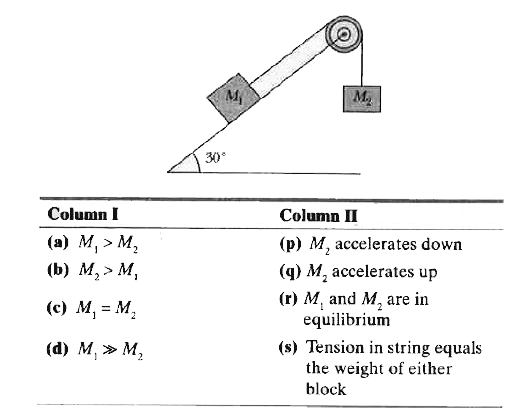
View SolutionThe acceleration of the block and respectively in situation shown in the figure is: (pulleys and string are massless).
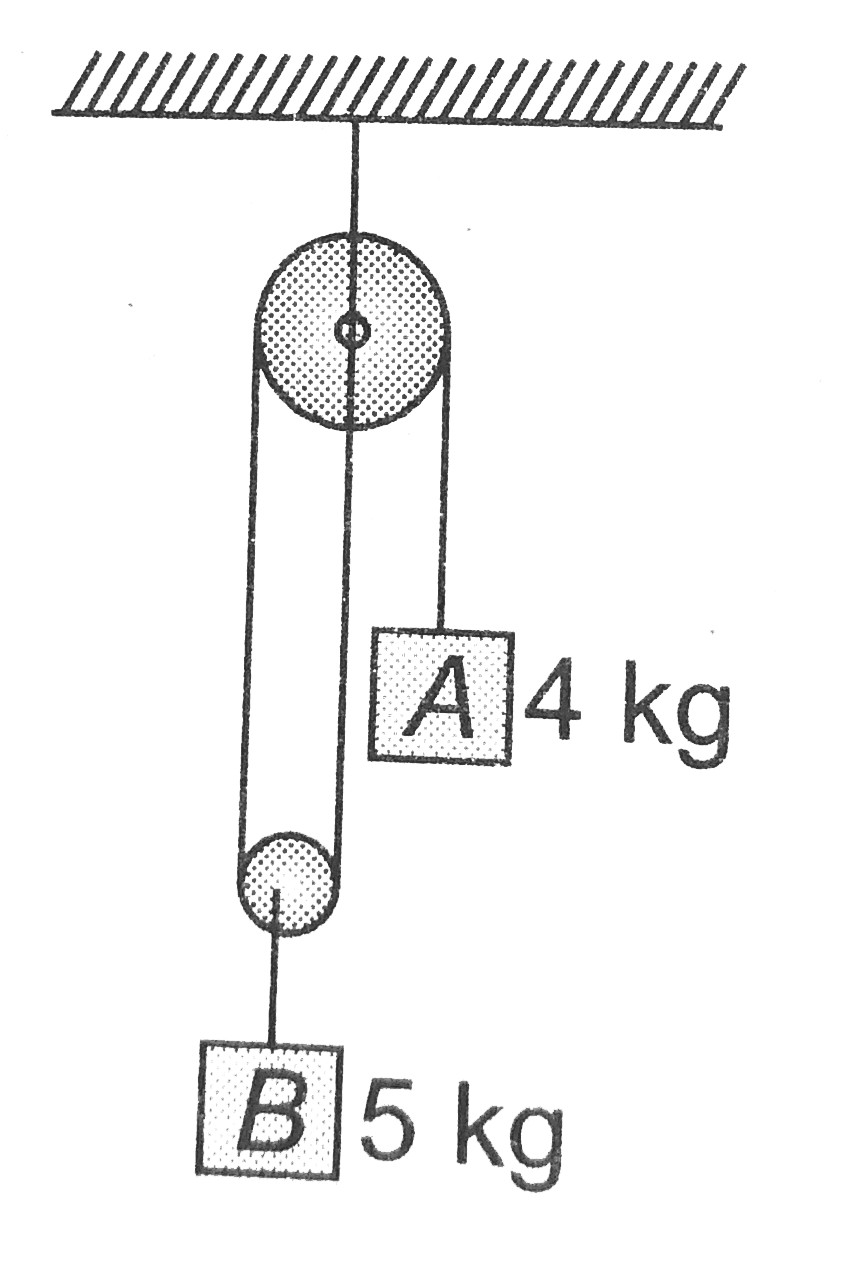
View SolutionFind the acceleration of masses m_(1) and m_(2) connected by an inextensible string, shown in figure-2.13(a). The string and pulley are assumed to be massless and frictionless.
View SolutionFigure shows an arrangement of pulleys and two blocks. All surfaces are frictionless . All pulleys and strings are massless. All string are smooth and massless. The acceleration of block A is :
View SolutionFigure shows an arrangement of pulleys and two blocks. All surfaces are frictionless . All pulleys and strings are massless. All string are smooth and massless. The acceleration of block A is :
View SolutionFind the accelerations of two blocks. Assume pulleys and strings are massless and frictionless. Also assume the string to be inextensible.
View SolutionFind the accelerations of two blocks. Assume pulleys and strings are massless and frictionless. Also assume the string to be inextensible.
View SolutionTwo masses m1 and m2 are suspended together by a massless spring of constant k. When the masses are in equilibrium, m1 is removed without disturbing the system. The amplitude of oscillations is
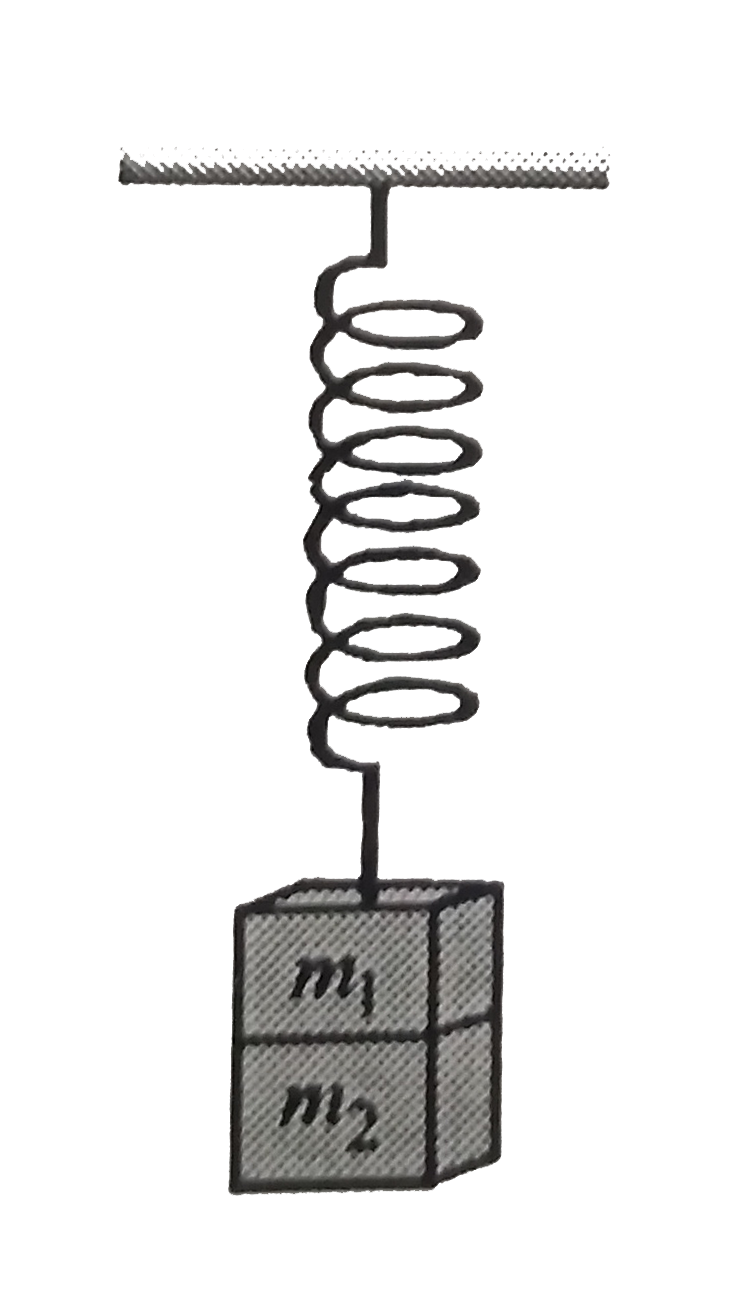
View SolutionTwo masses m1 and m2 are suspended together by a massless spring of constant k. When the masses are in equilibrium, m1 is removed without disturbing the system. The amplitude of oscillations is

View SolutionTwo masses m1 and m2 are connected by light string, which passes over the top of a smooth plane inclined at 30º to the horizontal, so that one mass rests on the plane and the other hangs vertically as shown in fig. It is found that m1, hanging vertically can draw m2 up the full length of the plane in half the time in which m2 hanging vertically draws m1 up. Find m1/m2 . Assume pulley to be smooth-

View SolutionIn the pulley system shown in figure. P and Q are fixed pulleys while A, B and C are movable pulleys each of mass 1kg. The strings are vertical and inextensible. Find the tension in the string and acceleration of frictionless pulleys A, B and C
View SolutionIn the pulley system shown in figure . P and Q are fixed pulleys while A, B and C are movable pulleys each of mass 1kg . The strings are vertical and inextensible . Find the tension in the string and acceleration of frictionless pulleys A,B and C
View SolutionIn the pulley system shown in figure. P and Q are fixed pulleys while A, B and C are movable pulleys each of mass 1kg. The strings are vertical and inextensible. Find the tension in the string and acceleration of frictionless pulleys A, B and C
View SolutionIn the arrangement shown, the pulleys and strings are massless. The acceleration of block B is :
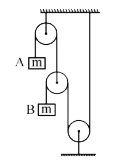
View SolutionIn the arrangement shown, the pulleys and strings are massless. The acceleration of block B is :
View SolutionIn the systems shown in figure (A), (B), (C) and (D), the scales of the springs are calibrated in newton Assume that Pulleys are massless and frictionless Strings are massless The surface in figure (D) is frictionless Reading of the spring scale in figure (C) is
View Solution